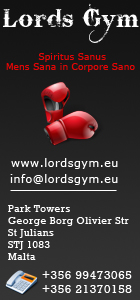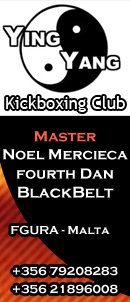Posts Tagged ‘Welsh Boxer’
Boxers of Yesteryear - Tommy Farr
.
By Daniel Ciminera
A legend of boxing, does not have to be your favourite boxer. Nor even the best of their time. But someone who’s story, or ring wars are inspiring long after they have retired and even died. These people become the reasons boxing was so exciting and drew me in like a moth to a flame when I was a child. I’m not very old, I’m only 25, so perhaps these people have more to do with my father’s influence on me as he was the one who got me interested in boxing, himself boxing for our country. Despite not being old enough to have seen most of these guys live, I was brought up watching tapes of them and being gripped as though I were ringside, throwing every punch along with them and screaming them on to victory. After all, that’s what boxing is all about right?
I would like to begin with Tommy Farr as I am from about 2 miles from where he was born and raised and he is still something of a local hero. Many gymnasia across Wales are adorned with some sort of image of Tommy, and he is held in the highest regard by all. He was a fighter who, not only gave his all inside the ring, but was a great example and role model outside of it too, always sure to spend a lot of time with his family.
Farr spent his early life, as did most people from the poverty stricken South Wales valleys, “down the coal-mine”. The whole area is built around coal mining. Farr hated this life with utmost passion and was later to describe boxing as “the lesser of two evils”. At the age of twelve, having left school already, Farr took part in his first official contest, over six rounds in Tonypandy. He won the fight via a points decision and his appetite had been well and truly whetted. He was nicknamed “The Tonypandy Terror” thereafter.
His professional record hosts 126 bouts, with 81 wins (24 by KO), 30 losses, 13 draws and 2 no contests, although Farr was also a keen “booth boxer”, fighting at fairgrounds and such. Including his “booth” fights, his total career fights amasses to 296. An astonishing number in comparison to today’s boxers, and given that his original retirement was at the age of 26, this is even more amazing!
You could describe Farr as a journeyman, with ups and downs, and seemingly every time he’d build an unbeaten streak, he’d get beaten and be back to square one. However, his luck was to change in the mid 1930s, Farr managed to string together seven professional wins to receive a chance at the Welsh Light-Heavyweight title, outpointing Randy Jones to take the title and went onto another six straight wins. Then, just as with the rest of his career, he was to lose. He lost three times against Eddie Phillips, the last of which was for the British Light-Heavyweight title.
Farr then came back into favour winning eighteen contests straight, including wins against memorable opponents and former Light-Heavyweight champions, Tommy Loughran and Bob Olin as well as another renowned Welsh boxer, Jim Wilde. This gave Farr an opportunity to battle against Ben Foord in March 1937, to take both the British and Empire Heavyweight titles. He was by far and away the underdog in the bout despite his growing reputation in the sport. He used his awkward crouching style and jackhammer-esque jab to win an untidy affair. He had now proven he was good enough for the world stage.
Farr’s first venture onto this platform was just a month later (imagine that today) against Max Baer, in which he thoroughly dominated the favourite. In the early rounds, Baer played to the crowd (in a fashion not too dissimilar to that of “Apollo Creed” in the Rocky movies), acting as though he could remove Farr from the bout at any time he wished. When Baer eventually decided he was ready to end the match, he found he couldn’t get past the iron rod that was Farr’s jab.
No matter what Baer tried, he was met head on by the jab and that was the way the fight was to play out with Farr putting in the boxing performance of his career to take a points win. Two months later in June 1937, Farr fought and knocked-out Walter Neusel in superb fashion in the third round. This set Farr up for a dream bout with Joe Louis in the August of 1937, just weeks after Louis had taken the title from “The Cinderella Man”, Braddock, and amidst a world of controversy surrounding the title and Max Schmeling.
Before the two went head to head at Yankee Stadium, New York, in front of 32,000 spectators (a large number even today), Louis asked Farr where he had got the large amount of scars on his back. With a cheerful smile, Farr replied, “oh they’re nothing, I got those from fighting with tigers”, which reportedly is said to have terrified Louis. The fight gripped the South Wales valleys like no other had done ever before, and still hasn’t been rivalled to this day, it is said that every household in the Rhondda valley had stayed up until the 3am (UK time) start to listen on the radio, which had been relayed to the BBC via telephone.
There were even loudspeaker playings of the bout in church halls and public houses. The fight, as was agreed by all, was going to be a walk in the park for Louis. Nobody outside of Wales, gave Farr a chance at all. Apparently nobody showed this script to Tommy as from the first bell, he charged at Louis and stuffed two solid jabs into his face. This was to be the tone of the evening, much to everyone’s shock. However, while Louis was obviously the more “skilled boxer” and the more fearsome puncher, Farr kept coming forward and forward the entire fight with his low guard and was completely unphased by the champion, who literally had torn Farr’s face to shreds.
Farr eventually losing out to a close judges decision met by loud, emphatic booing from the crowd. They thought Farr had beaten Louis. As did the “Los Angeles Times”, printing “A courageous, tousle-haired man from Wales named Tommy Farr tonight made a bum out of Joe Louis and all the experts when he stuck the full fifteen rounds against the world’s champion to lose a close decision”.
In my opinion, the fight was close enough to be called a draw, however, perhaps the judges had been swayed by the fact that Louis’ punches had clearly been more damaging as Farr’s face was a terrible mess. Farr commenting that his face “looked like a dug-up road”.
Farr then had four more fights in America, including bouts against James Braddock and Max Baer. He lost all four before returning to the UK to win a further four fights, avenging an earlier loss against “Red” Burman. He then retired in 1940 at the age of 26.
In 1950, after 10 years of retirement Tommy Farr was facing bankruptcy and was forced to return to the ring to make some money, having 16 more fights and winning 11 of them, Farr also became the Welsh Heavyweight Champion in 1951 with a sixth round knock-out over Dennis Powell.
In his last bout, Farr was beaten in the seventh round by Don Cocknell, after which Tommy took the ring announcer’s microphone and sang the Welsh national anthem, which is seen by us all here in Wales as a fitting and emotional farewell to a roller coaster of a career of a great man.
Tommy Farr is rightly considered one of the greats in boxing and one of the greatest Welshmen in history. A fact of which he’d be very proud. Like he said after fighting Louis, “I’ve got plenty of guts….I’m a Welshman.”
Boxers of Yesteryear - “Peerless” Jim Driscoll
If there is one boxer from yesteryear who deserves laying claim to being the greatest pound for pound fighter of all time this is certainly Welsh boxing legend “Peerless” Jim Driscoll (1980 – 1925).
Nowadays Jim Driscoll, one of the greatest pugilists ever is not so well remembered and perhaps his legacy has been somewhat mistreated & unfairly faded in the annals of boxing history.
Jim Driscoll (also known as ‘Jem’ and “Peerless” ) has also got to be one of the most selfless boxers of all time, Driscoll gave up his chance for a title rematch with American - world title holder Abe Attell because he had promised to box in an exhibition bout at the Park Hall in Cardiff, in aid of his favourite charity, the Assault at Arms Committee, which supported Nazareth House, where the Sisters of Nazareth cared for scores of orphans. Driscoll had already given the reigning champion a stylish whipping in 1909 by out-boxing the world featherweight champion Abe Atell in a no-decision contest in which Atell’s title was not on the line. This earned him his world famous nick name of ‘Peerless Jim’ given because, although he was not champion, it was clear to see, he was without peer.
.
This most famous son of Newtown, which was located in the docks area of Cardiff, was born into poverty of Irish parents on the 15th December 1880 and the product of a distinctive working-class culture in which many of the Welsh-born offspring of Irish immigrants considered them-selves to be Irish. Jim was one of five siblings. At around the time Jim was born the Marquees of Queensbury rules were replacing the ‘Bare-Knuckle’ London prize rules. He was only 7 months old when his father, Cornelius, was killed after being knocked down in a goods yard close to his home. He began boxing as a young boy while working in the composing room of the old Evening Express, a local newspaper office, using waste paper wrapped around his hands in place of gloves.
.
Along with most Welsh boxers of that time he started out in the boxing booths, then commonplace in Wales, coming up against men of all shapes and sizes. The Legend goes he would challenge anyone to hit him on the nose, inside a minute, while he stood on a handkerchief with his hands tied behind his back! The infamous Jack Scarott, who ran the boxing booth, added a silver crown to the purse for anyone who managed to do it. Jim Driscoll was just aged 17 and earning a sovereign a week from boxing. No one ever earned the ultimate prize.
Driscoll turned professional around 1900 or 1901 at the age of twenty. Driscoll’s fighting was typical of the British style, based around a high guard, straight punches, and use of the ring. Unlike his contemporaries, Jim was described as a “master of many tricks of the trade”. He had lighting quick feet, which he used to skip and side-step out of danger, two fast accurate fists coupled with a hard punch, and a varied arsenal. He was tough, and could fight all night at a fast pace.
In 1901 (in what many sources claim his first year as a professional) he took the Featherweight championship of Wales. Jim ventured from Wales to England, and beat the likes of former king George Dixon in just his third recorded year as a fighter. Driscoll’s maturity can be seen through his record. As he worked his way up, he was beaten just once by Harry Mansfield (a natural lightweight he’d beaten twice before, and went on to defeat two more times).
.
Now Jim went for the British featherweight title. It was 1906 and he was against the reigning champion Joe Bowker. Although the fight went the full distance of 15 rounds, Bowker was easily outclassed by Driscoll who won comfortably on a points win. Jim Driscoll then gave up his title but the following year he met Joe Bowker again for the Featherweight Championship of Great Britain. However this time Jim KO’d Bowker in the 17th round to become a two-time British Champion. The next year, 1908, saw Jim avenge his only defeat to date by defeating Harry Mansfield over 6 rounds and taking the Empire title* by defeating Charles Griffin over 15 rounds (this fight was also billed as being for the British version of the World Featherweight Title). Jim was now a serious threat to the current world champion New Yorker Abe Attell.
*The ‘Empire title’ was created in 1908.
He then went to America where his reputation had gone before him. The Americans were keen to see this Welshman they had heard so much about. Stories had gone before him of his ring craft, elusiveness and superior boxing ability. They were not disappointed as Jim set about beating the best America had to offer with ease. They could hardly lay a glove on him.
This was the era of the no-decision in America, where the rules stated that if a boxer was not knocked out then the fight was declared a no-decision. It is primarily this rule which prevented Peerless Jim from being declared a World Champion.
At the time the World Featherweight Champion was Abe Atell, a true champion taking on and beating the best of his day. However, Abe Atell would not fight Jim Driscoll in anything other than a 10 round no-decision contest. The fight was agreed and went ahead in February 1910. Undeniably Abe was a great champion but as with the others before him once faced with Peerless Jim Driscoll the story was much the same. Jim peppered Abe constantly with his perfect straight left while evading with ease any offerings from the champion, this continued over the course of the entire fight, with observers later stating that Jim had won every round. It is widely acknowledged that had there been a decision that night then Wales, and the world, would have heralded a new World Champion - Peerless Jim Driscoll. Although a decision was not given it was customary for the ringside reporters to give their decision as to who won the fight. This was done for betting purposes. The reporters all gave the verdict to Jim Driscoll. Indeed, Nat Fleischer when commenting on the fight said ‘Driscoll was easily the best. The Welshman easily outpointed Atell and virtually took his title away from him. He definitely proved, as far as I am concerned, that he was the best featherweight in the world’.
Abe Atell, in view of the sound whipping he had received offered “Peerless” Jem Driscoll a rematch but the Welsh Warrior was a man of integrity who had never forgotten his roots. He was a staunch supporter of his church, remained close to his community and had great affection for the NazarethHouse Orphanage whom he had made a promise to before departing of putting on and partaking in exhibition bouts. Being a true gentleman he sailed back to Wales the following day to honor his promise effectively giving up his chance to become a World Champion rather than break the promise he given.
.
Once home, an ocean of fans greeted Driscoll. He was considered the world champion by Britain and the IBU. Back in the ring, Jim scored two KOs over Arthur Hayes and Spike Robson for the British title, that saw Driscoll gain ownership to the Lonsdale belt he had now won three times.
By now Driscoll was nearing 30, and the lung ailment that was be his undoing was already beginning to have effects on him. He took another trip to America, this time to face a young-n’-rough bantamweight in Philadelphia, Pal Moore. He was out-pointed in a quick six rounder, where he was said to be slow — not his usual self.
Driscoll came back to Cardiff, where a fight with Freddie Welsh (the country’s star lightweight) had been arranged. They had competed in a lively six-round NC the year before. The two were good friends, but the hype got to Welsh. He was intent on doing everything in his power to beat his countryman, who was the clear fan favourite.
.
The fight was ugly. Both men were booed. Welsh’s game plan was to deny Driscoll the inside and bang away at his body. In the fourth round, Driscoll was knocked to his knees, but got up gamely despite a ten-pound disadvantage. In the sixth and seventh, Welsh excessively punched Driscoll in the kidneys. The crowd roundly protested. Driscoll replied, butting his man under the chin. In the tenth, Driscoll did it again and was disqualified, which brought an end to an entirely unsatisfying bout.
After the set back, Driscoll fought on, defeating Spike Robson again, this time in 11 rounds to retain his British title, before taking care of Frenchman Jean Poesy in 12 to claim the European title (adding to his long list of titles). Driscoll’s final fight before his exile was an epic struggle against the talented Englishman Owen “The fearless“ Moran, that ended in a 20-round draw.
.
Driscoll’s boxing career was interrupted by World War I, where he was recruited as a physical training advisor. Driscoll’s health was also failing.
After a couple of comeback fights Peerless Jim Driscoll stepped in to the ring for the last time in a failed attempt to beat Charles Ledoux, who was considered to be the best featherweight in the world at this time. It was not a wise decision but Jim was not to resist a last big pay day. Ledoux was 11 years younger than Driscoll, at his peak and a rough all-action type of fighter. To make matters even worse Jim had been taken ill four days before the fight and climbed into the ring a very sick man. It was apparent to all at ringside that Jim was indeed a sick man, he looked aged, grey-haired and haggard. Astonishingly however, once the fight had started Jim Driscoll gave a display for 15 rounds of what many consider to be the finest display of classical boxing ever witnessed. He hit Ledoux at will, danced around the ring bobbing and weaving, feinting, jabbing - displaying all his old ring craft. At the end of the eighth round even Ledoux joined in the applause for the brilliant Welsh master. For 15 rounds it was a totally one sided fight, Ledoux could not place a telling punch on Driscoll. For one last time The Master was at work.
It was unfortunate that the fight was over 20 rounds, not the 15 rounds that Driscoll had wanted. After dominating the fight totally for 15 rounds Jim Driscoll was now hopelessly tired. Ledoux connected with a wild right hook to the body of The Master toward the end of the 15th round but did not follow up, such was his surprise at actually striking his opponent. Had he followed up the fight would have ended there and then as Jim was all but out on his feet. Desperately Jim’s corner tried to revive him and persuade him not to go out for the next round but Jim would not hear of it. At the sound of the bell Jim staggered to his feet. Before a punch was landed Driscoll’s corner threw in the towel.
For one last time Driscoll received a standing ovation for his brilliance. The audience passed around a hat in the arena, and managed to give Driscoll a £1500 bonus. Just over four years later, consumption claimed Jim Driscoll. 100,000 people in Cardiff attended his funeral — one of the biggest events in the country’s history.
On January 30, 1925, Jim Driscoll (aged 44) died at the Duke of Edinburgh Hotel on the corner of Ellen Street, the street where he was born and raised. The headline in a national boxing magazine proclaimed: THE KING IS DEAD.
By any reckoning, it was the biggest funeral Wales has ever seen. On 3 February 1925, an estimated 100,000 people lined the streets of Cardiff in respectful silence as the cortege slowly wound its way from St Paul’s Catholic Church in the Newtown district of the city to Cathays cemetery. Following the obsequies, which had been carried out by Monsignor Irvine, Canon Hannon and Fr Grieshaber, the solemn funeral procession moved on to North Road where the coffin, draped in the Union Jack, was transferred from the bearers’ shoulders to a gun carriage. The band of the 2nd Battalion of the Welch Regiment moved to the head of the procession - now over a mile long - playing the funeral march, while soldiers of the regiment carried their rifles reversed in honour of a dead comrade. Children from Nazareth House, the city’s Catholic orphanage run by the Sisters of Charity, carried striking floral wreaths in honour of their staunchest supporter and patron, while a number of former Welsh boxing champions and representatives of local government and the military were also in attendance. At the conclusion of a brief graveside service in the gathering dusk, the Last Post was sounded: ‘Peerless’ Jim Driscoll, championship boxer and winner of a coveted Lonsdale Belt, philanthropist and people’s champion, feted son of Cardiff’s ‘Little Ireland’, was dead. (‘Immigration and Integration: The Irish in Wales 1798 - 1922′ Paul O’Leary)
.
“The Text Book of Boxing” is one of the most important boxing books of all time. First published in 1914 and written by England’s finest fighter, “The Text Book of Boxing” is a master class in the manly art of pugilism. This boxing manual contains over 40 photographs and detailed instructions on the proper execution of boxing techniques for both offense and defense.
“Driscoll was the king of all boxers. From Driscoll, by a close study of his ways, I learned the wisdom of always leading with the left hand; he taught me much about stance, and how to time my blows so that they would have all the weight of my body behind them.” Georges Carpentier
In 1956 he was inducted into the International Boxing Hall of Fame.
In 1997 a statue of Peerless Jim was erected near the site of the former Central Boys Club where he used to train. The chairman of the committee which erected the statue was Carlow-born Ricki Ormond, a former Lord Mayor of Cardiff, who was a useful amateur boxer as a young man. Ricki was acclaimed as the People’s Lord Mayor during his year of office when his future wife, Val Singleton was his Lady Mayoress. More than 70 years after his death, Peerless Jim was still raising money for Nazareth House. His nephew, Bernard Rowlands, of St Joseph’s Parish, Penarth, presented Jim’s Welsh Silver Belt and Certificate of Appreciation from the Assault of Arms Committee to the Welsh Hall of Fame, at the Museum of Welsh Life, St Fagans. A pair of boxing gloves, presented to Driscoll by Abe Atell were also included in the presentation. The Hall of Fame committee, chaired by Lord Jack Brooks, presented Nazareth House with a cheque in appreciation of the gifts.( John O’Sullivan)
.
Press release Wales — A STATUE of South Wales boxing legend Jim Driscoll is set to prove a hit with a new generation of sports fans after being unveiled by Ricky Hatton. — The present-day boxing star officially marked the reinstatement of the statue, after long-standing building work, at the entrance to the new Radisson Blu Hotel in Cardiff city centre. — The statue was originally erected in 1997 near the site of the former Central Boys Club where Driscoll, nicknamed “Peerless Jim”, used to train. — Hatton, two times IBF and IBO welterweight champion, unveiled the reinstated statue as he checked out the Millennium Stadium as a possible future fight venue.
.









